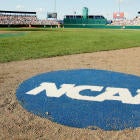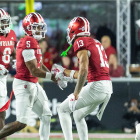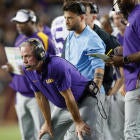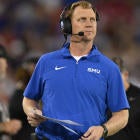The discussion over what once thought to be a slam dunk -- an additional year of eligibility for college athletes participating in spring sports -- has now gone "sideways," according to one Power Five athletic director. That source is not alone in that view, which comes a day before the NCAA Council could vote on the issue that emerged after the cancellation of the NCAA Tournament and the remainder of the 2019-20 athletic year due to the coronavirus.
One day after the tournament was canceled, the NCAA Council Coordination Committee released a statement saying, "eligibility relief is appropriate for all Division I student-athletes who participated in spring sports."
Division I Council Coordination Committee agrees eligibility relief is appropriate for spring sports: pic.twitter.com/u7hwYOyTDV
— Inside the NCAA (@InsidetheNCAA) March 13, 2020
At the time, that statement was interpreted by many as formally granting an additional year of eligibility for athletes in baseball, golf, men's volleyball, lacrosse, rowing, softball, tennis, track and water polo. It was also interpreted as a common-sense resolution by the sometimes slow-moving NCAA.
The NCAA Council must formally adopt such a measure as an adjustment in the waiver process for athletes.
All of that was before the announcement of a shortfall of more than 60 percent in annual NCAA revenue distribution to member schools because of the cancellation of the tournament.
Last week, USA Today projected merely granting seniors another year of eligibility would cost Power Five public institutions between $500,000 and $900,000.
In essence, administrators are coming to financial grips with doing the right thing.
The subject has become so complicated that the vote may be pushed beyond Monday.
"That was a game changer," one athletic director said of the NCAA distribution shortfall. "That's going to impact the non-Power Five [conferences]. The two leagues it probably impacts the least are the Big Ten and the SEC. But rest of the leagues, it impacts everybody."
Division II has already granted an additional year of eligibility to athletes competing in those spring sports.
However, there is already widespread agreement among major-college administrators that winter sports, including basketball, will not get that extra year.
For athletes -- particularly seniors in spring sports whose careers would otherwise be over -- the situation was summed up by one administrator this way: Sometimes, life's not fair.
"Almost all of our programs are managing a zero bottom line," Big 12 commissioner Bob Bowlsby said. "Some of them have reserves, but generally speaking, we're run like the non-profits that we are."
That means any unexpected shortfall could have a dire effect on athletic budgets. Most spring sports are "equivalency sports," meaning those athletes receive partial scholarships.
In dealing with an additional year of eligibility, an athletic department would have to write a check for that partial scholarship. The athletes themselves would be paying for the remainder. The institution itself would be benefiting from getting both of those checks.
Caught in the middle are those spring athletes whose careers might be over. In baseball, that means seasons that were less than one-half complete might be lost.
Few sources wanted to be quoted directly because the situation is so sensitive and fluid. It wasn't clear as of Sunday how some conferences will be voting.
"As a general rule, our conference is in a place where we're going to try to provide some relief in that position," Sun Belt commissioner Keith Gill said. "Our students have been through a lot."
Meanwhile, a Big Ten source said the conference was "still discussing trying to see where others are." One Pac-12 source said the league is talking in general terms about allowing an additional year of eligibility for seniors only.
"I think it's more circumstance [of the budget shortfall] than structure," said one Power Five AD.
Presidents, athletic directors and administrators are also considering additional implications.
Will awarding athletes an extra year of eligibility affect the normal student? Do students on academic/music scholarships deserve an extra year of eligibility? If they don't, what are the possibly legal liabilities of that decision?
Whatever is done now may have implications in the fall if football is impacted. Consider the eligibility concerns of 13,000 FBS football players if the sport is canceled due to the virus. That would be a monumental undertaking in comparison to this current discussion.
What about expanding rosters? If all spring athletes are allowed an extra year, some allowance may have to be made for roster limits if all the seniors return. For example, Division I baseball distributes 11.7 scholarships among a limit of 35 players. How is that limit impacted by returning seniors and an entire recruiting class?
What about Title IX considerations? If most of the male athletes return at a particular school and only a few of the female athletes come back, that could cause an imbalance in opportunities. The almost 50-year-old Title IX statute prohibits federally-funded institutions from discriminating against employees or students based on gender.
Complicating matters, the NCAA Council's action wouldn't be adoption of formal legislation. As mentioned, it would be a tweak to the current waiver process for athletes seeking an extra year. The council could grant a blanket waiver for those spring athletes -- or something in between.
Traditionally, its actions are final on such issues. However, the board could inject itself in the process, especially one this high profile.
The NCAA Council is made up of 40 members, including one from all 32 Division conferences. Voting is weighted toward the Power Five -- ACC, Big Ten, Big 12, Pac-12 and SEC. Penn AD Grace Calhoun is the current chair.
















